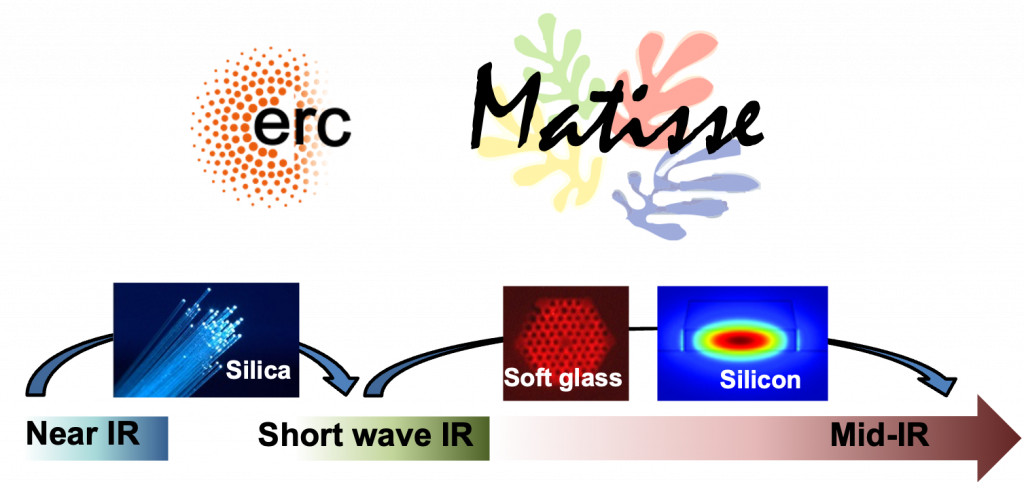Middle Infrared Broadly Tunable Compact Cavity-Less Source based on Parametric Conversion

A critical challenge to bringing advance optical technologies closer to the end user is to enable cheap, compact and efficient devices. In particular, exploiting the short-wave and middle infrared spectral regions (2 – 4.5 micron) through the development of versatile and efficient light sources will make critical applications such as spectroscopy, health monitoring or sensing more ubiquitous.
However in contrast to the visible of near infrared portion of the spectrum, longer wavelength spectral range is still under developed, leading to a pressing need for the demonstration of freely tunable, versatile and robust short-wave and middle infrared sources. As such wavelengths are difficult to generate with the required versatility through more conventional lasing means, exploiting spectrally distant parametric interactions in nonlinear media offers a stimulating alternative.
To this end, the ERC project MATISSE investigated cavity-less sources based on nonlinear wavelength conversion for the efficient generation of short-wave and middle infrared light. Three distinct, but highly compatible, nonlinear mixing platforms were pursued:
1. Silica based fully-fiberized short wave infrared sources based on telecommunication components, combining nonlinear conversion stage and linear amplification stage in a single design resulting in high power conversion efficiency.
2. Dispersion engineered Chalcogenide photonic crystal fibers for operational compatibility with short-wave infrared sources in order to provide fully-fiberized platform for middle infrared nonlinear optical parametric processes.
3. CMOS- fabrication compatible integrated optical waveguides that can be dispersion and material engineered for telecommunication or short-wave infrared pumping, and extreme wideband operation (visible to middle infrared).
Our results showed that not only chalcogenide photonic crystal fibers and silicon nitride waveguides can be engineered and fabricated to support efficiency nonlinear optical processes, but most importantly can be made compatible for pumping with novel fully fiberized short wave infrared sources, thus eliminating the need for expensive and bulky pump sources. Our approaches offer a path towards the development of compact, robust and portable photonic sources that best leverage mature telecommunication technologies and novel middle infrared platforms.
Funding source: ERC StG MATISSE